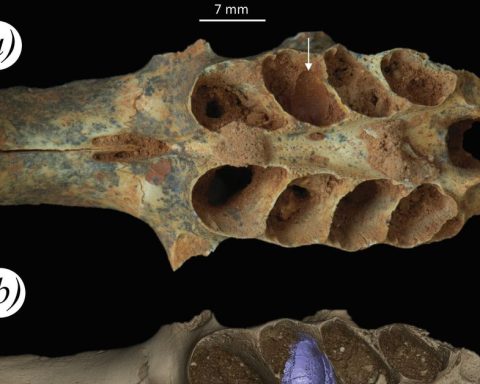The excess mortality for the 2020-2021 biennium, that is, the difference between the deaths actually produced and what is expected based on what happened in the previous four years, was 18.2% and this gap is mainly explained by the Covid-19 pandemicaccording to the Ministry of Health.
In the breakdown by year, it can be seen that the highest proportion ofe excess deaths occurred in 2021, when 432,242 people died; that is, there were 26.3% of deaths (89,901) above what was expected based on what had happened between 2015 and 2019a period for which there had been between 337,091 and 342,341 deaths per year.
While, during the first year of the pandemic, excess mortality had been only 9.8%, configuring a total excess of 18.2% for the period 2020-2021“one of the lowest records in Latin America,” the ministry said in a statement.
“We consider that the total number of deaths in excess is due to Covid 19,” said the national director of Epidemiology and Strategic Information Analía Rearte during a meeting with journalists.
“Then what can be done is to compare these values and if that difference in registration is small – as it happened – it means that the surveillance system was sensitive, robust, transparent and timely, although it is not exactly coincident”Carla Vizzotti
The greatest excess mortality took place in the first semester (40% of additional deaths), when the second wave of Covid-19 occurred due to the introduction of variants with greater transmissibility and severity, to later drop to 9.3% of deaths unexpected during the second half of 2021.
These data come from the reports “Vital Statistics 2021” and “Excess mortality 2020-2021” that were presented by the Ministry of Healthwhere it is evident how Covid-19 displaced other diseases as the main cause of death, similar to what happened in other countries in the region.
“In 2021, unlike what happened to us in 2020, Covid 19 was the first cause of mortality (in general terms), followed by heart disease, influenza and cerebrovascular diseases,” Rearte said.
However, the official explained that the coronavirus did not have the same performance in all age groups, and while “it was the main cause of mortality in the groups of 25 to 74 years”, it fell to second place “in the group of 75 and further”.
“In absolute numbers and in the mortality rate, it is confirmed that those over 50 years of age have the highest burden of mortality, but when we look at age groups, the impact was proportionally higher among young people,” Rearte said. .
The excess mortality registered in 2021 in Argentina was significantly lower than most countries in the region, such as Brazil (34.3%), Ecuador (35.3%), Mexico (42.6%), Colombia ( 44.2%), Paraguay (55.2%), Bolivia (57.9%) and Peru (60.9%), according to data from Our World in Data (which collects information from official sources).

“In 2020 we were one of the countries with the lowest excess mortality because the sanitary measures implemented were very effective, with figures comparable to some European countries”Rearte said.
“And in 2021, despite the fact that the first quarter was very strong, we were among the countries with the lowest excess mortality in Latin America thanks to the vaccination that reached 80% of those over 50 years of age vaccinated with at least one dose” said Rearte
If the entire two-year period is taken into account, the excess mortality registered in Argentina is slightly higher than that of Chile (17.3%) and continues to be significantly lower than that reached by other Latin American countries such as Brazil (24.3%). , Paraguay (31.8%), Colombia (32.9%), Mexico (41.1%), Ecuador (43.9%), Bolivia (50.1%) and Peru (55.3%).
To calculate excess mortality, the data from the National Health Surveillance System (SNVS) are not used, but rather those from the vital statistics that are compiled from the cause of death recorded in each of the death certificates, data that they are consolidated and sent annually by each of the jurisdictions.
“Afterwards, what can be done is to compare these values and if that difference in registration is small – as it happened – it means that the surveillance system was sensitive, robust, transparent and timely, although it is not exactly coincident,” said Minister Carla Vizzotti. .
“In 2021, unlike what happened to us in 2020, Covid 19 was the first cause of mortality (in general terms), followed by heart disease, influenza and cerebrovascular diseases”Analia Rearte
In this sense, Rearte contributed that “according to research published in The Lancet that compares excess deaths with deaths explained by Covid, that ratio gave us 1.2, while in other countries the underreporting was much higher” as is the case from Japan with a ratio of 6, Mexico with a 2 or Spain with 1.7 “and the WHO calculates that there were three times more deaths than those registered globally.”
“From day one, the decision was made with all jurisdictions that the cases and deaths from Covid-19 would be reported through the National Health Surveillance System,” explained the head of the health portfolio, Carla Vizzotti.
“For this, it was necessary to strengthen the system so that the information was sensitive and timely enough to guide decision-making, and that the technical teams could measure the impacts of those decisions. Thus, we went from 4,000 to 20,000 users. With the leading role of the ministry, we worked together with all the jurisdictions and thanks to the commitment of all of them, today we can present these results”.
The impact of the pandemic was also observed in the increase in maternal mortality: in 2021 that rate was 7.4, while the previous year it had been 4.1 per 10,000 live births.
Of the 393 maternal deaths registered in that year, 220 (56%) correspond to pregnant people who died due to Covid-19 during pregnancy, childbirth or the puerperium.
When the data is disaggregated, it is observed that the increase in the maternal mortality rate is mainly explained by Covid-19 (80%) within the so-called indirect obstetric causes; while maternal deaths due to direct causes (obstetric complications in pregnancy, childbirth or the puerperium) decreased compared to 2020.
“If Covid is excluded, the maternal mortality rate remains the same and even decreases in relation to previous years, but since we monitored this situation, we were able to include pregnant women as a priority group for vaccination,” Rearte said.


















